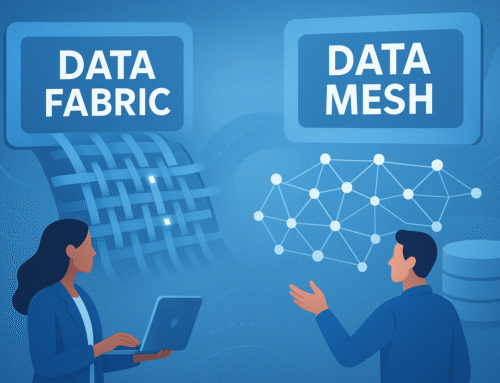Understanding the customer journey is essential for boosting conversions and growing your business. By analyzing every interaction that a customer has with your brand, you can optimize their experience and significantly increase the likelihood of a sale. Here’s how you can leverage customer journey analysis to improve conversions with a clear 6-step approach.
Step 1: Identify Key Customer Touchpoints
The first step in analyzing the customer journey is to identify the touchpoints where customers interact with your brand. These touchpoints may occur through various channels, such as your website, social media, email marketing, or even in-store visits. Mapping out these points of interaction helps you understand where customers are engaging with your business and which points may need optimization.
Why Touchpoints Matter
Each touchpoint offers an opportunity to guide the customer further down the sales funnel. By optimizing these interactions, you create a seamless experience that minimizes friction and maximizes conversions.
Best Practices for Touchpoint Optimization
- Website Usability: Ensure your website is user-friendly, responsive, and quick to load.
- Customer Support: Provide easy access to customer support through chatbots, phone, or email.
- Consistent Messaging: Make sure that the tone, messaging, and branding are consistent across all channels.
Step 2: Define Customer Personas
Understanding your target audience is essential for optimizing the customer journey. By creating detailed customer personas, you can better predict how various groups of people will interact with your business and tailor the journey accordingly.
Developing Accurate Personas
To create effective personas, gather data from your customer base, including demographic information, buying habits, and pain points. This will allow you to segment your audience and provide more personalized experiences.
Benefits of Customer Personas
- Increased Relevance: Personalizing touchpoints based on persona data helps make interactions more relevant and effective.
- Improved Customer Experience: Tailoring content and offers to specific personas creates a more engaging and satisfying experience for the customer.
Step 3: Analyze Customer Behavior at Each Stage of the Journey
Once you’ve mapped out touchpoints and developed personas, it’s time to dive into customer behavior. How are customers behaving at each stage of the journey, and what roadblocks are preventing them from converting?
Tracking Customer Behavior
Tools such as Google Analytics, heatmaps, and session recordings can provide valuable insights into customer interactions. By analyzing these behaviors, you can pinpoint drop-off points, identify patterns, and adjust your strategy to improve engagement.
Key Metrics to Monitor
- Bounce Rate: How many visitors leave your site without taking action?
- Time on Page: How long are customers staying on each page?
- Conversion Rate: What percentage of visitors are completing a desired action, such as making a purchase or signing up for a newsletter?
Step 4: Streamline the Path to Purchase
A critical element of increasing conversions is to make the path to purchase as smooth and intuitive as possible. Reducing unnecessary steps and eliminating friction in the checkout process can significantly boost conversion rates.
Optimizing the Purchase Funnel
Look for areas where the purchasing process can be simplified. This could involve reducing the number of clicks required to complete a purchase, offering guest checkout options, or providing clear and concise product descriptions.
Quick Wins for Streamlining Purchases
- Simplify Forms: Reduce the amount of information customers need to input during checkout.
- Clear CTAs: Ensure that call-to-action buttons are prominent, compelling, and easy to understand.
- Multiple Payment Options: Offer a variety of payment methods to accommodate customer preferences.
Step 5: Personalize the Customer Experience
In today’s competitive market, personalization is key to standing out from the crowd. Customers are more likely to convert when they feel that your brand understands their needs and preferences. Personalizing content, recommendations, and offers based on individual behavior can make a significant impact on conversion rates.
Using Data to Drive Personalization
By leveraging customer data, you can customize the user experience at various touchpoints. For instance, you can recommend products based on previous browsing history or send personalized emails with offers that are tailored to specific segments of your audience.
Types of Personalization to Implement
- Email Marketing: Send personalized emails with targeted offers and recommendations.
- Product Recommendations: Use data from previous interactions to suggest products that are most relevant to each customer.
- Dynamic Content: Adjust website content dynamically based on the user’s location, interests, or browsing history.
Step 6: Continuously Test and Optimize
The final step in optimizing the customer journey is to continuously test and refine your strategy. By implementing A/B testing and other methods, you can identify what works and what doesn’t, ensuring that your customer journey is always improving.
Importance of A/B Testing
A/B testing allows you to compare different versions of a webpage, email, or ad to see which one performs better. This iterative process helps you make data-driven decisions that lead to improved conversion rates over time.
What to Test
- Landing Pages: Test different headlines, layouts, and CTAs.
- Email Campaigns: Try out various subject lines, copy, and offers to see which resonates best with your audience.
- Checkout Processes: Experiment with different checkout flows to reduce cart abandonment rates.
By following these six steps, you can significantly increase conversions and enhance the overall customer experience. From identifying key touchpoints to continuously testing and optimizing, customer journey analysis offers a strategic approach to driving more sales and growing your business.



Leave A Comment